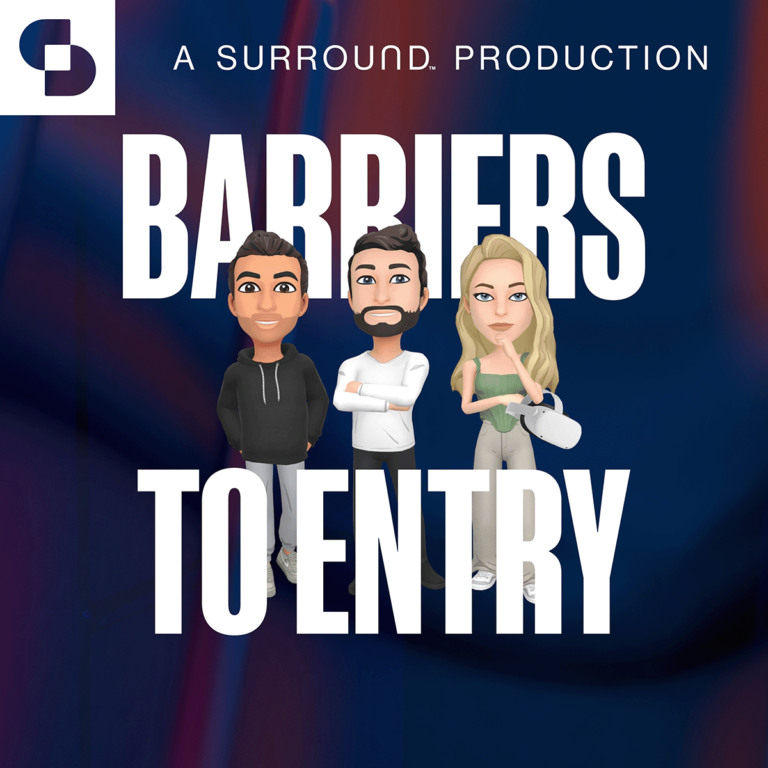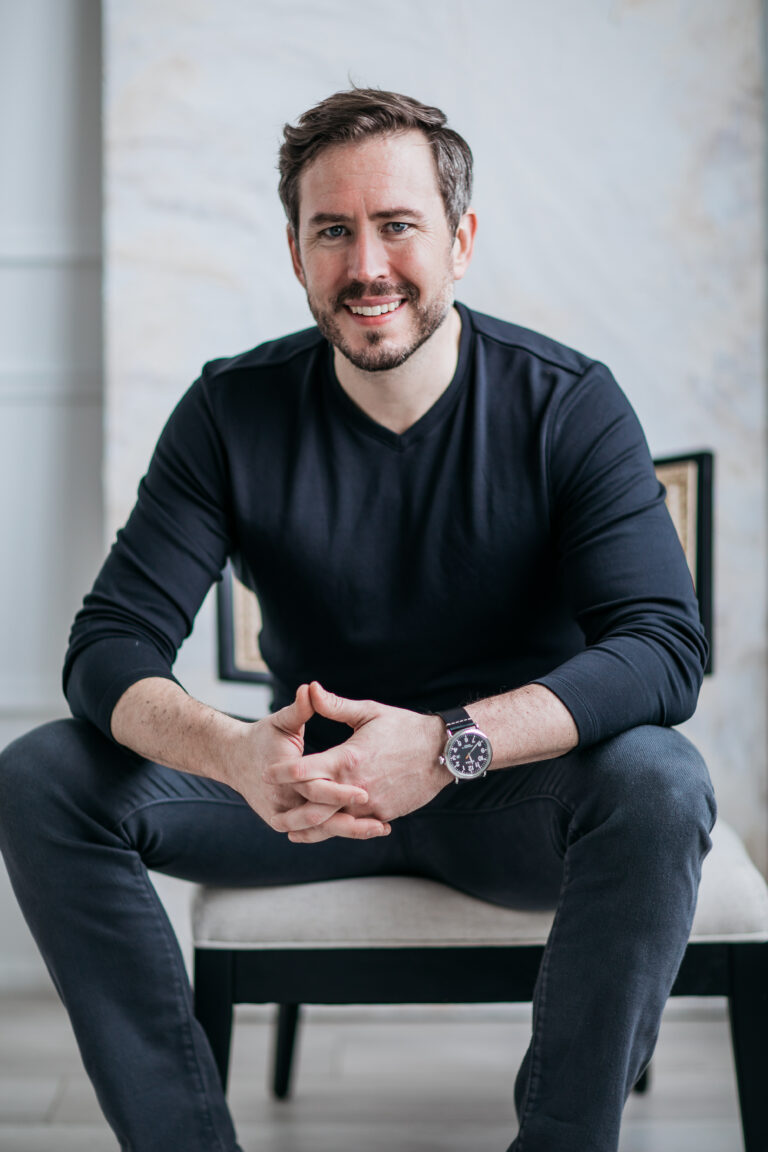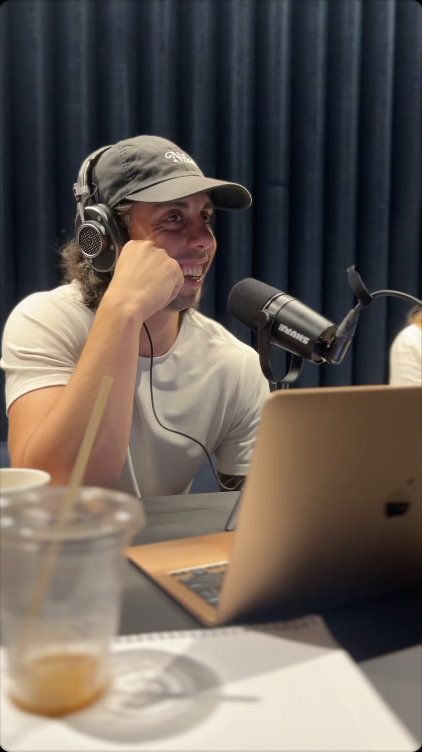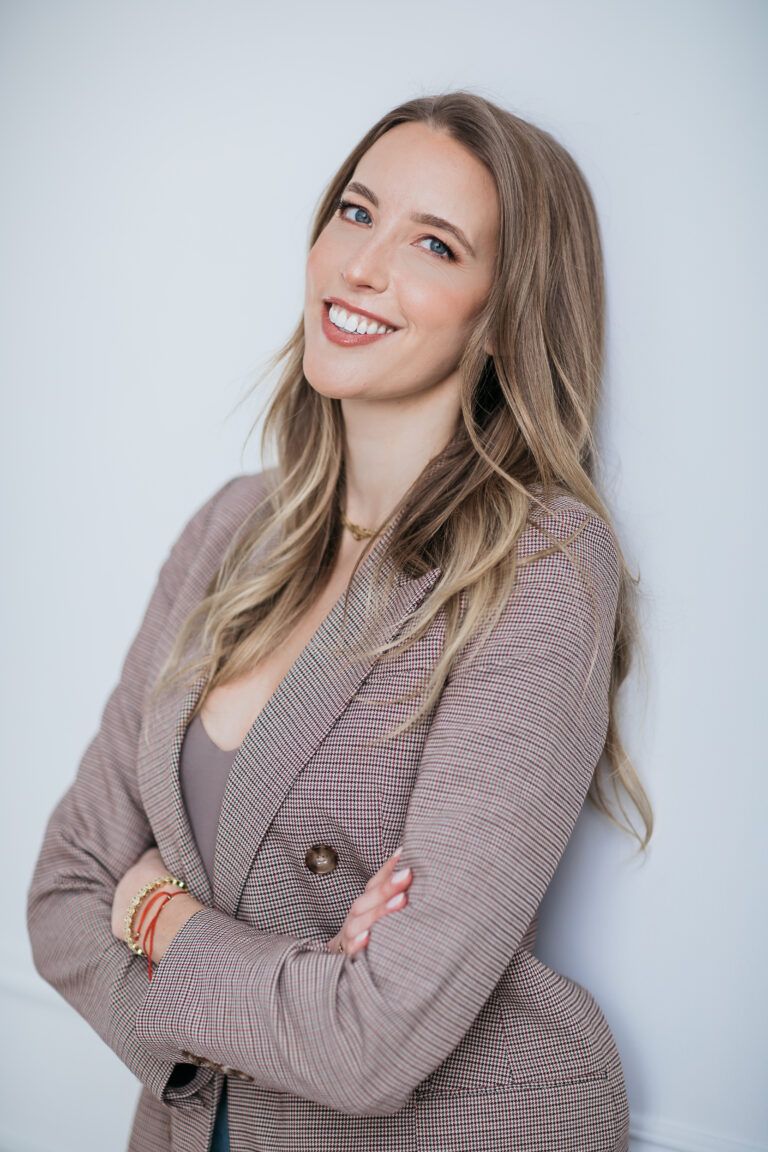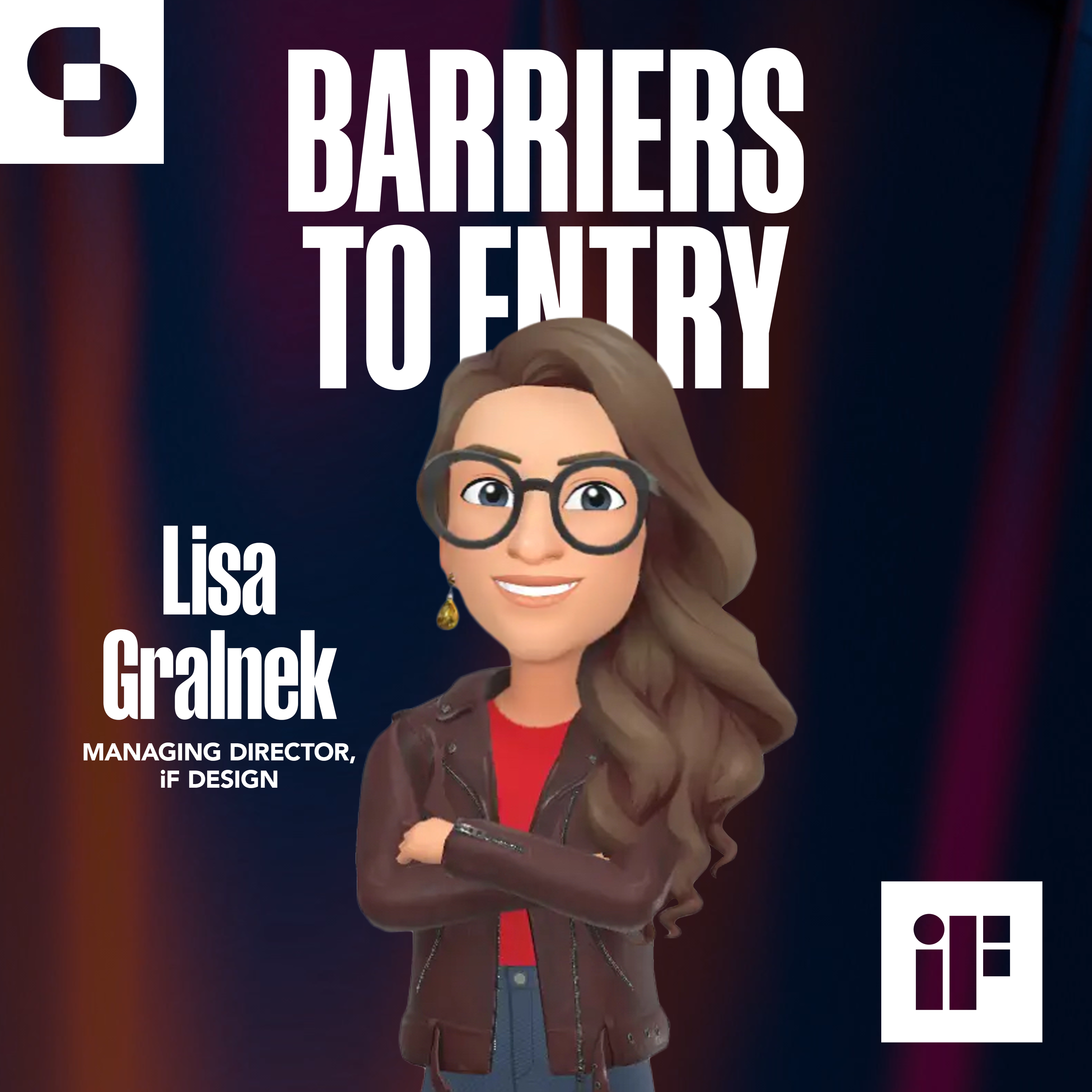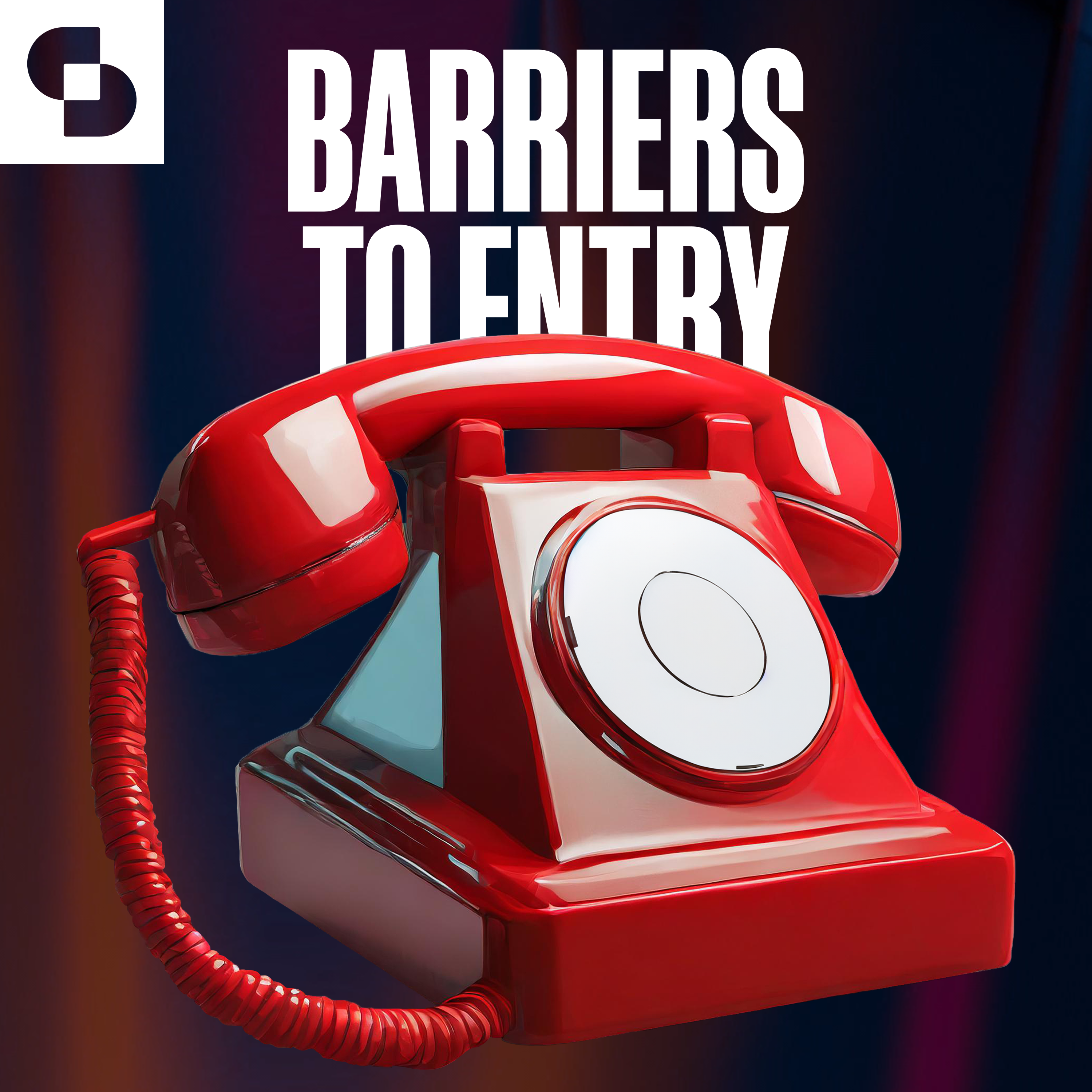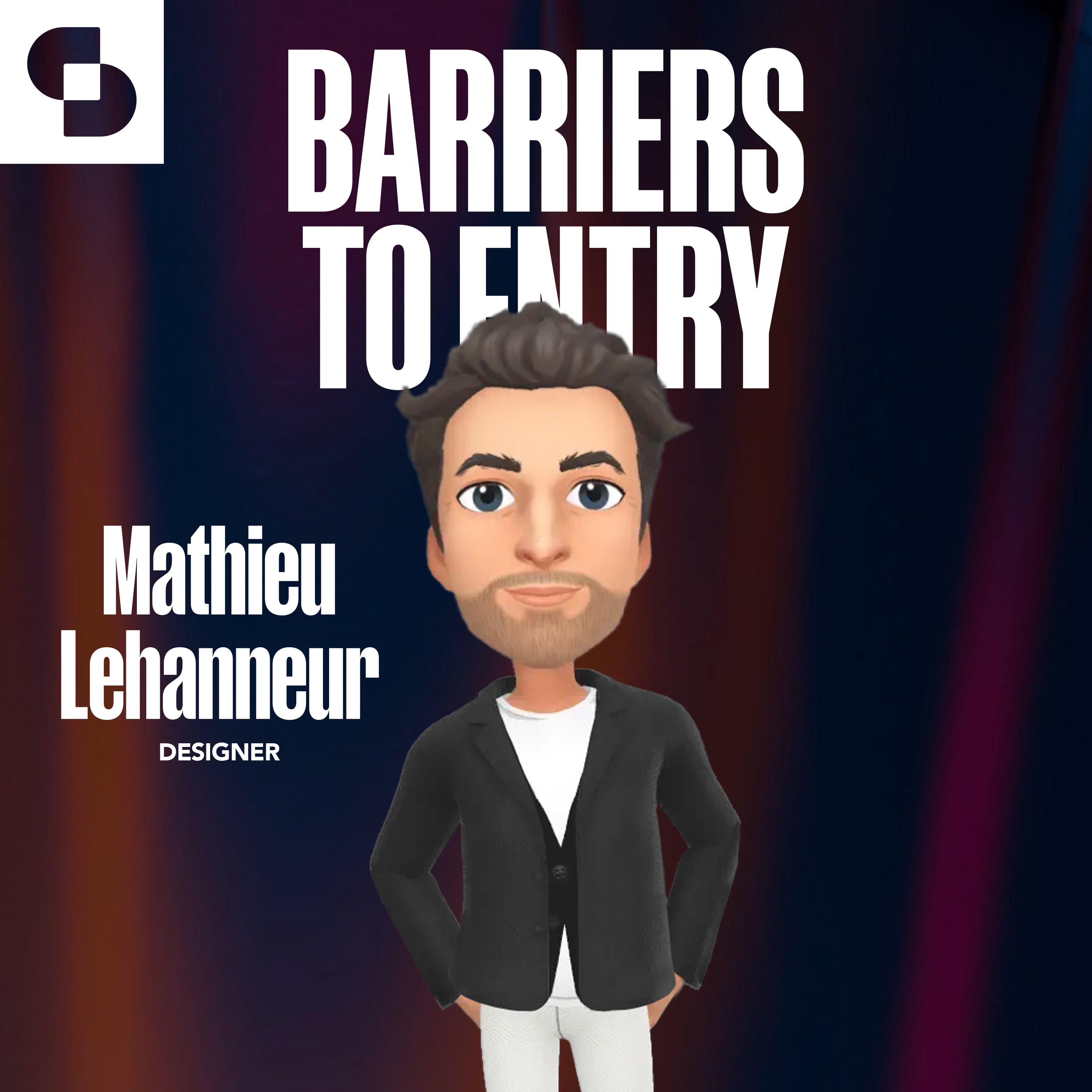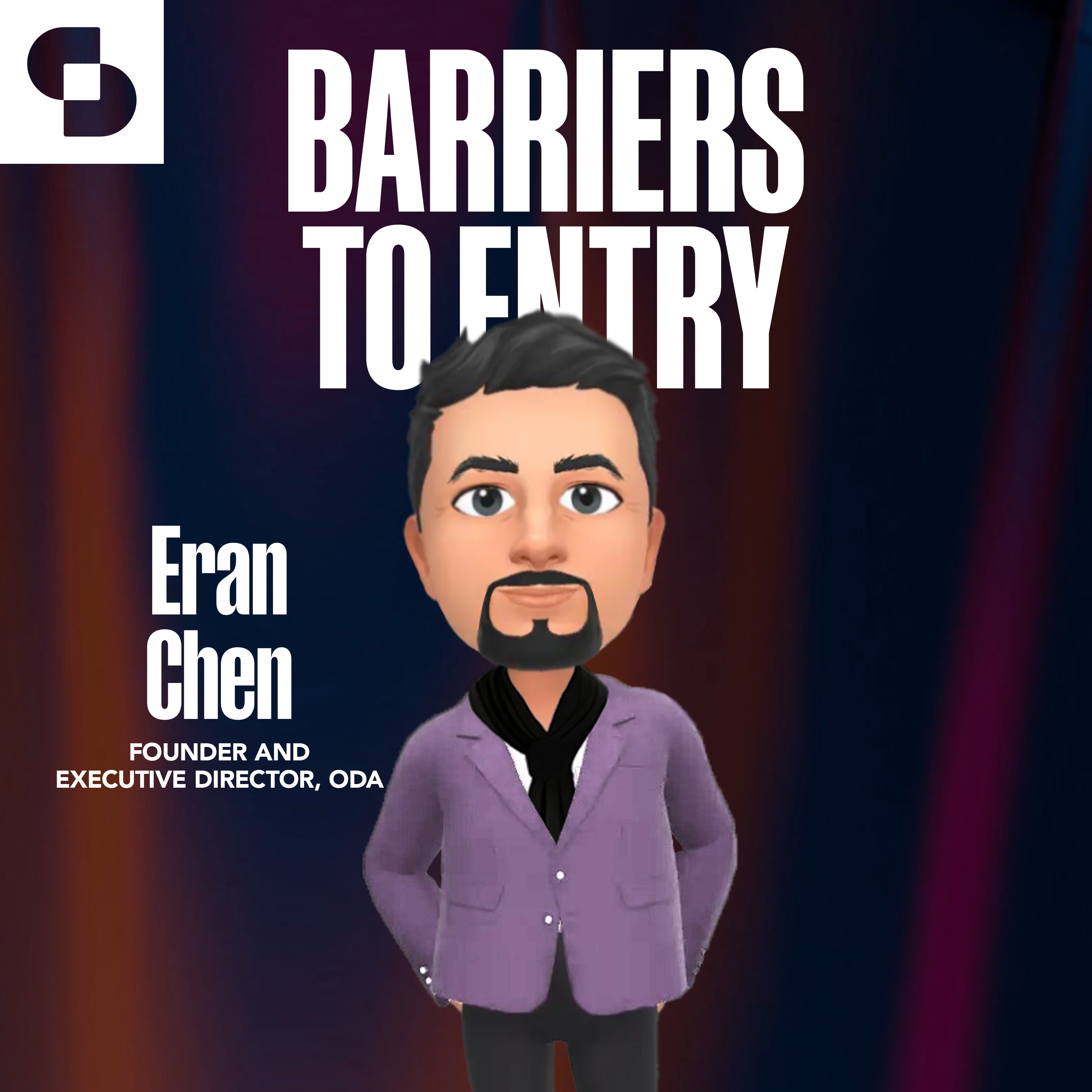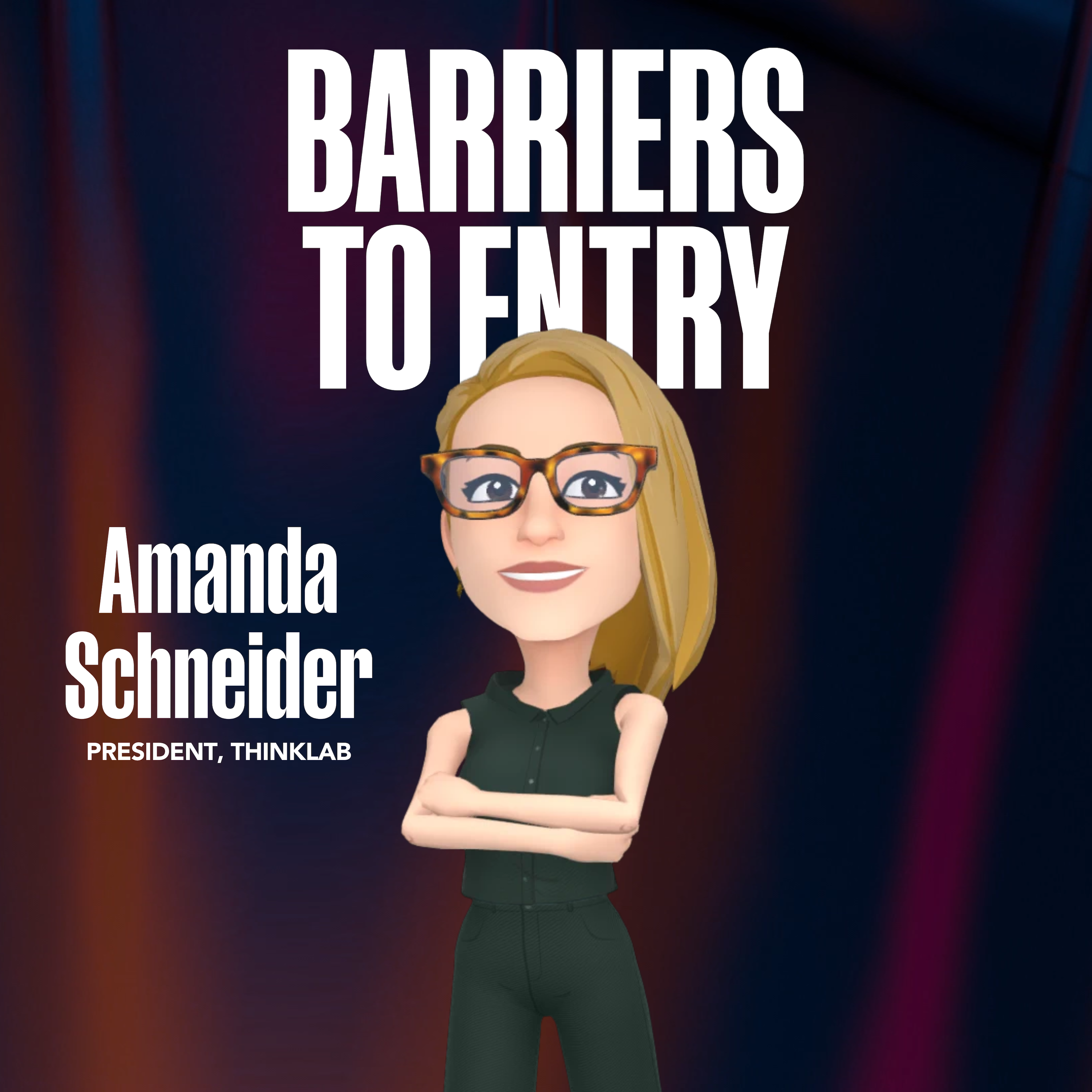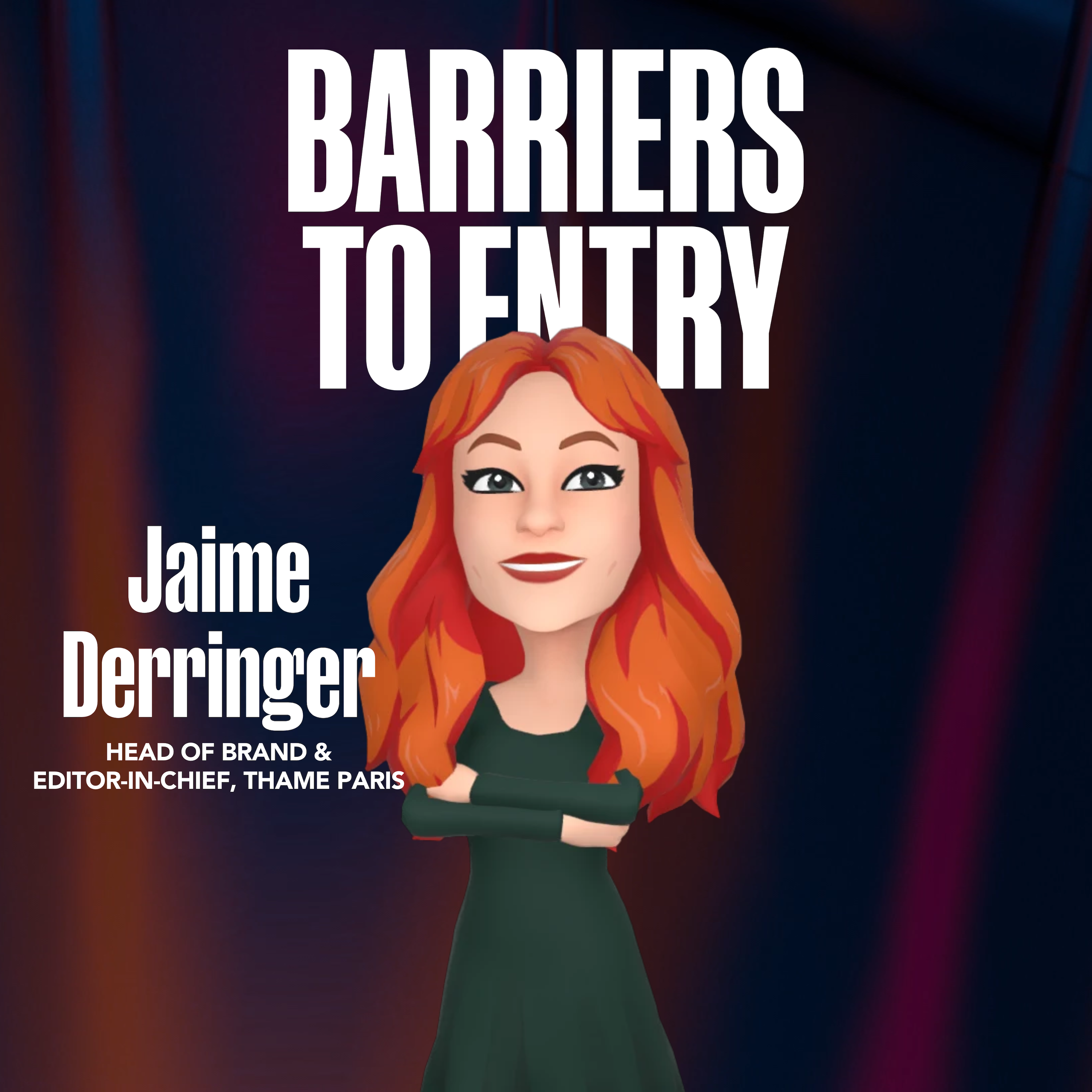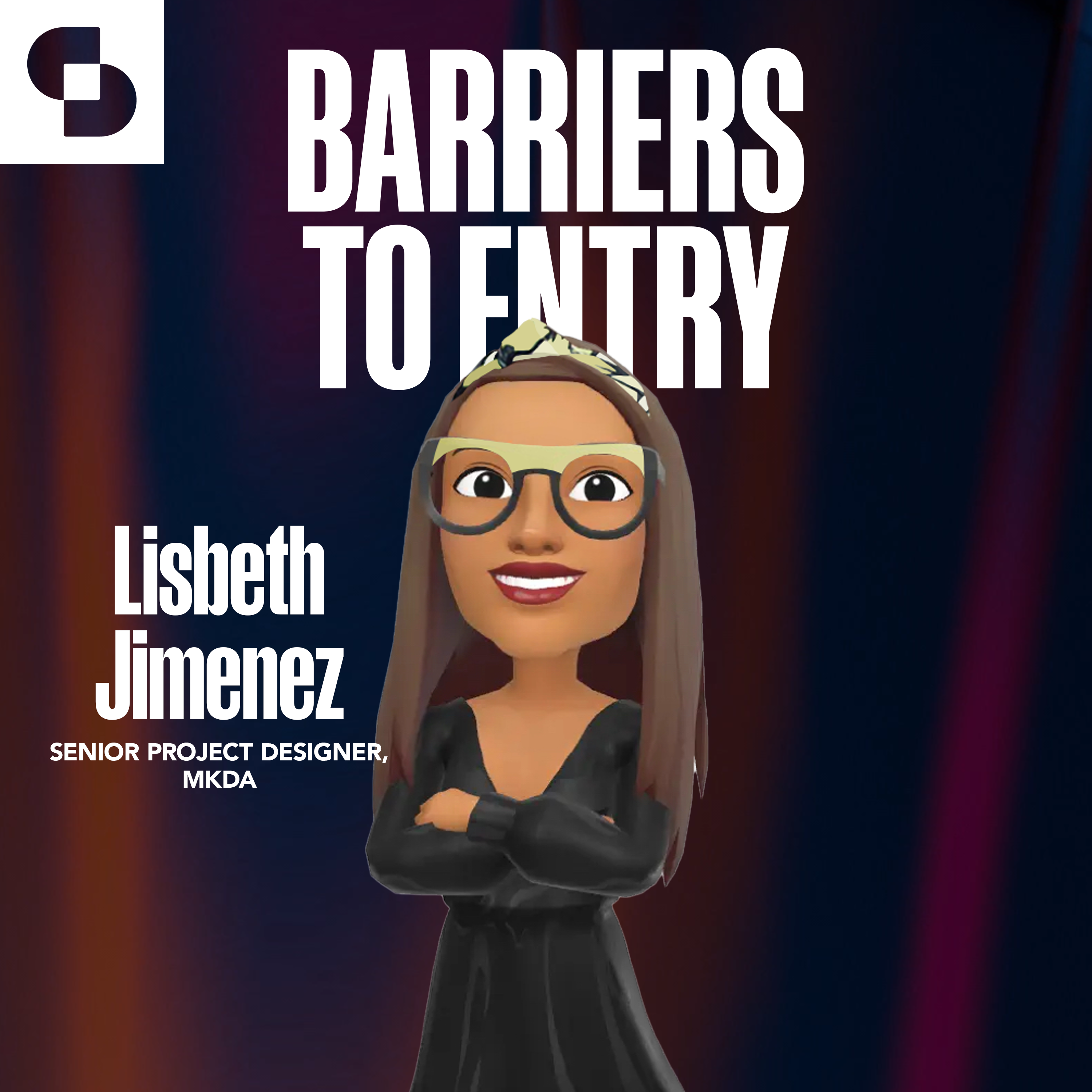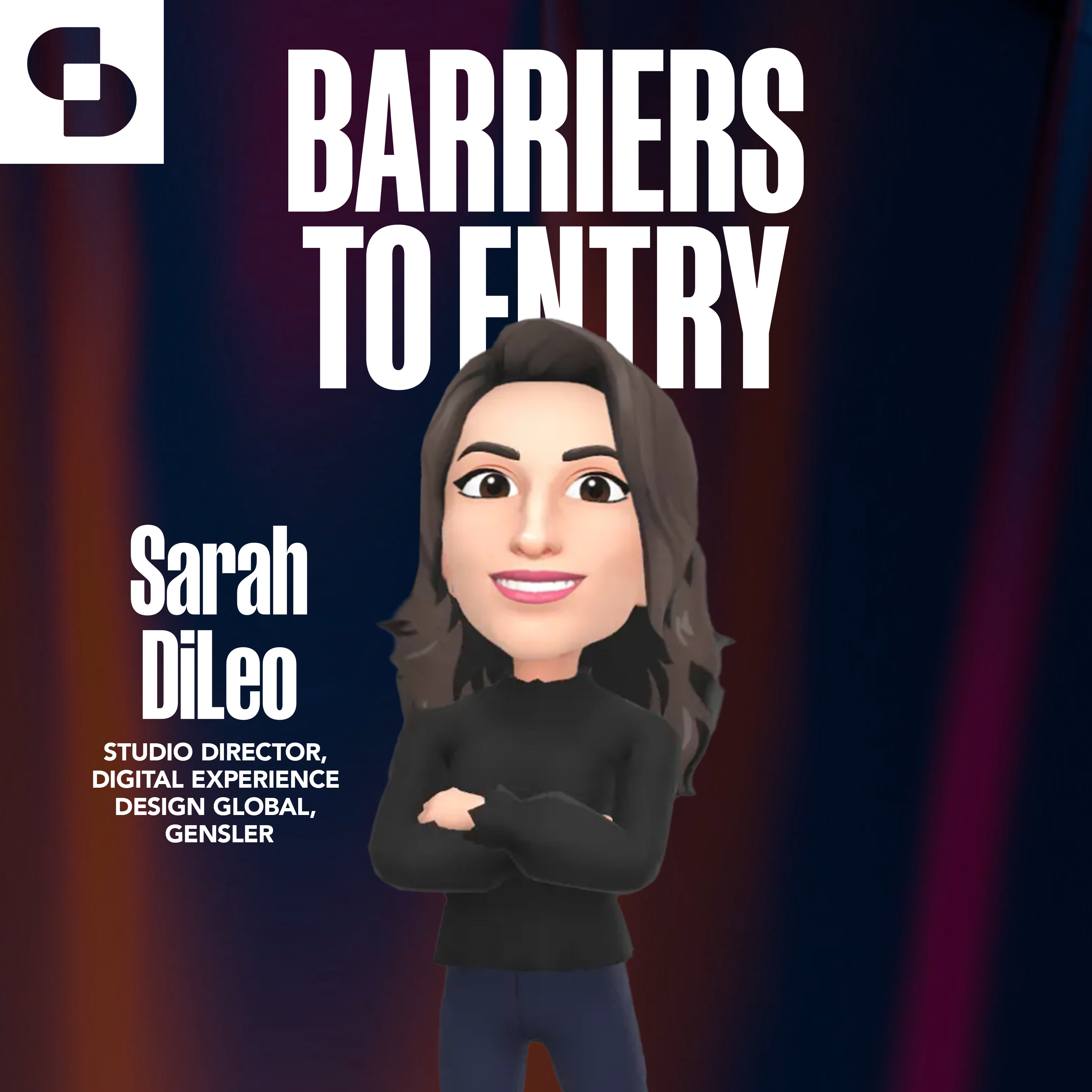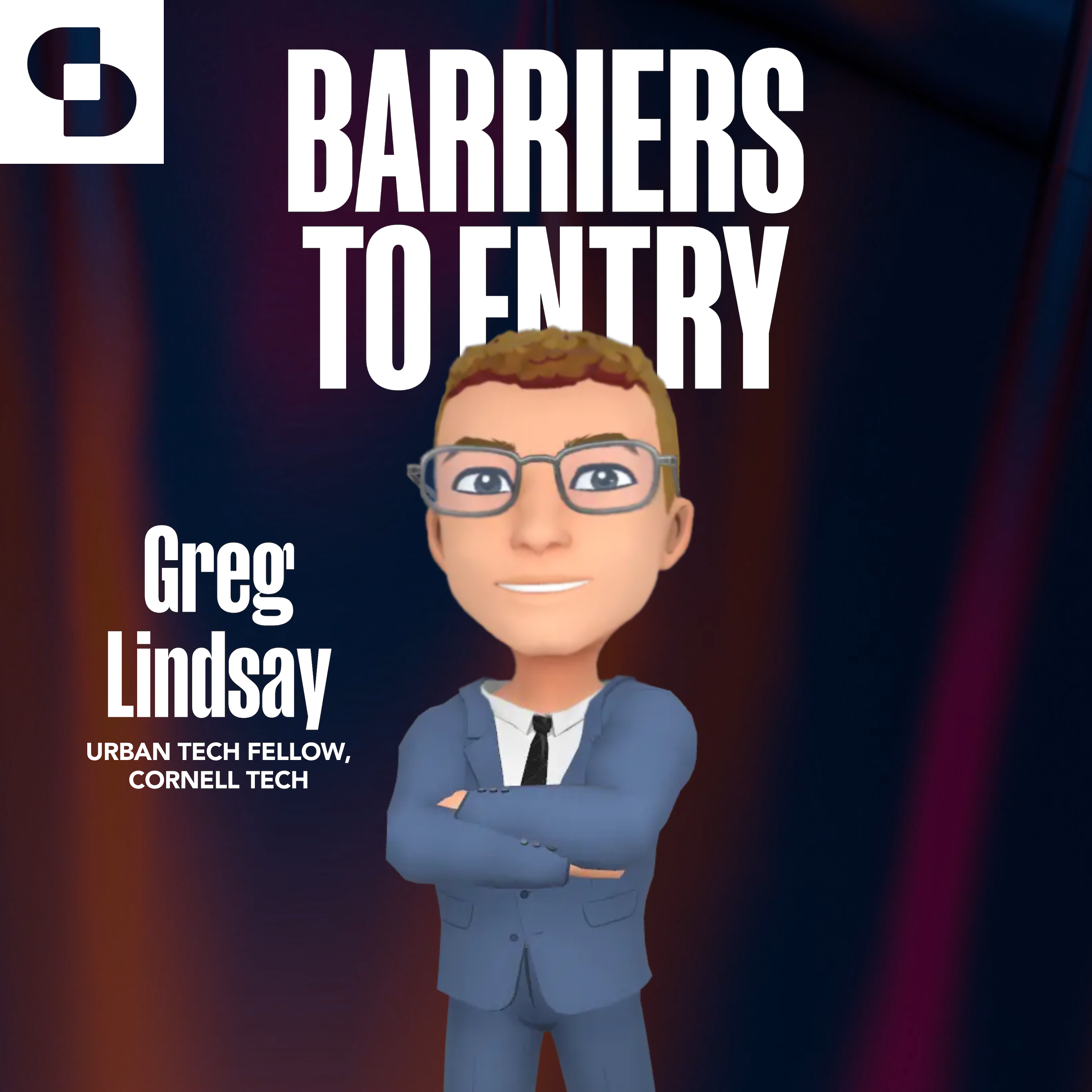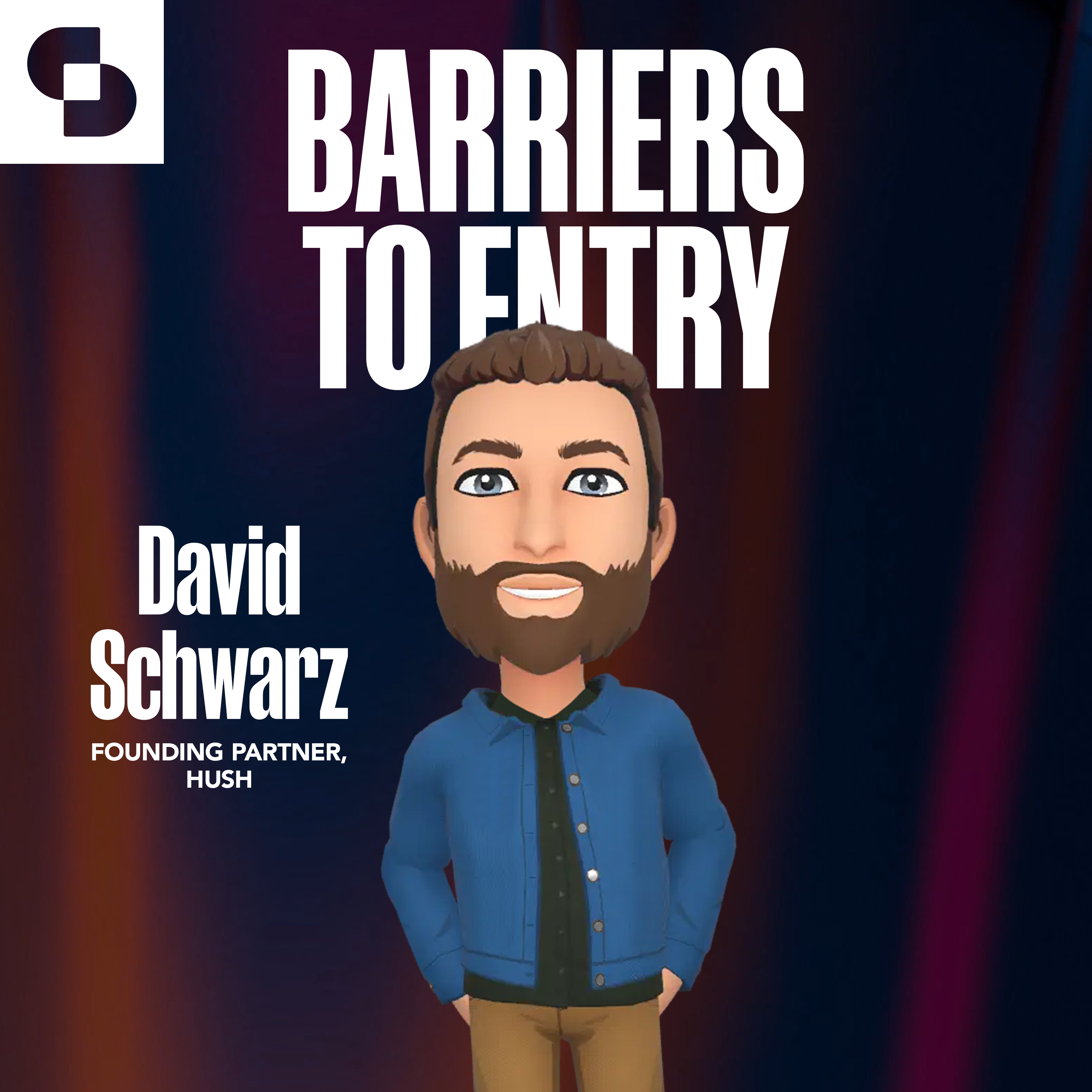Discussing recent announcements in AI and 3D spatial tech and their impact on A&D!
This week the gang puts on their party hats and pops a bottle of (non-alcoholic) bubbly to celebrate 25 episodes of BTE. Together, they reflect on the stories of the guests we’ve welcomed in the past year and discuss a series of recent and relevant announcements in 3D spatial design and artificial intelligence and their impacts on the architecture and design industry as well as society at large. Plus, Andrew gets optimistic, Bobby shares his love for Mark Zuckerberg and Tess turns into the comedian of the group – you don’t want to miss it.
Moments to check out:
- (2:41) – Reminiscing about our first 25 episodes
- (10:45) – The unflattening internet – recent news in 3D Spatial / “metaverse” tech and impact on FOW
- (20:26) – The impact of recent announcements in AI on the A&D industry
Connect with our hosts on LinkedIn;
References and resources:
- Las Vegas Sphere
- Meta x RayBan glasses
- Meta Connect (AI and Quest 3 announcements)
- Your AI bestie, Kendall Jenner
- Claude (AI) by Anthropic
- Connect with BTE for suggestions at: [email protected]
- Subscribe to Barriers to Entry
Discover more shows from SURROUND at surroundpodcasts.com.
Transcripts, show notes, and links to resources for each episode of Barriers to Entry can be found at surroundpodcasts.com/barriers-to-entry
This episode of Barriers to Entry was produced and edited by Wize Grazette.
Although the transcription is largely accurate it was generated in part by an automated service. In some cases it is incomplete or inaccurate due to inaudible passages or transcription errors.
Tessa Bain: [00:00:00] How does that apply to what I do? There’s that whole angle. But what if, you know, as an industry, we started to look at this as internal support. How do we get to use this technology and then free up time to be more human centric?
Bobby Bonett: Welcome to Barriers to Entry, the podcast where every episode we get into it with the leaders, the designers, the early adopters and the influencers who are driving innovation.
Bobby Bonett: in the architecture and design industry. It’s the metaverse, it’s AI, it’s blockchain, and it’s all happening here. I’m Bobby Bonett, and as always, I’m joined by my indescribable co hosts, Andrew Lane and Tessa Bain. How are y’all doing today?
Andrew Lane: Doing great. That’s a bit of a cop out of an adjective. Is it? I don’t have an adjective, so I’ll have an adjective that means there’s no adjective.
Bobby Bonett: Indescribably wonderful.
Andrew Lane: Maybe that’s diabolical, Bobby. Maybe it’s diabolical. Thank you. So, the [00:01:00] other thing that’s indescribable today is our guest. Mmm. Because, spoiler alert, we are 25 episodes into The Barriers to Entry run, and we’re doing our first solo show. Can it be solo when there’s three of us?
Bobby Bonett: It’s as solo as it’s gonna get, I guess.
Andrew Lane: Yeah, exactly.
Tessa Bain: I feel like that was a little anticlimactic for 25 episodes. You were just like, you know, it’s our 25th episode. And I’m like, no, it’s our 25th episode. It’s pretty cool. We’ll, we’ll
Andrew Lane: fix it in post. Uh, Wize will throw in some applause or something in the background there that’ll let people know that we’re celebrating.
Andrew Lane: We’re also celebrating the end of the summer of BTE. So it’s a good time to reflect. Don’t you think? Getting cozy for the fall.
Tessa Bain: Yeah, grab a pumpkin spice latte, pull the uggs out of the closet, bundle up in a cardigan, let’s
Bobby Bonett: go. For 25 episodes in, we started with Jamie Derringer. And since then, I mean, we’ve had everyone from leaders of design firms to captains of industry to just influencers in this [00:02:00] world who are experimenting with the technologies that In some instances, keep us up at night, but in some instances, uh, get us excited to wake up and start our days.
Bobby Bonett: And so we, I think we wanted to start today’s episode off by just reflecting on maybe some of our favorite guests from, from episodes 1 through 24, if you will. And then what we’ll do over the course of today’s show… is we’ll talk a little bit about the headlines that are encouraging and intriguing us as we think about and talk about in every episode, which is the ramifications for this boom of innovation we’re experiencing for the architecture and design industry.
Bobby Bonett: And I’ll remind you, listeners, because Our fantastic producer, Wize Grazette, reminded me that you can always find us at surroundpodcasts.com, follow us on Spotify, you can slam the follow button right now. You don’t have to wait until the end of the episode if you choose, but I’ll start with you, Andrew, give us, you know, a little taste of your favorite episode or some of your favorite moments from the first 24 episodes of BTE.
Andrew Lane: Yeah, they always say that you shouldn’t like go out and start picking your favorite kids, you know, but there was [00:03:00] definitely, definitely a lot, a lot of moments that stood out for me. I mean, really recently, I think we came into this hot with a great conversation with Greg Lindsay and I think that, you know, he was the first real academic that we’d had on the show and he was just so well researched that it was really a pleasure.
Andrew Lane: I really took it on as a job to get the show notes done for that episode because he brought You know, so much knowledge, but you know, on a personal level, it was great having a Philip Rosedale on the pod, having, you know, been someone who played around in second life and did some early marketing in second life step that many years ago to get to hear the kind of cool origin stories that he shared really warmed my little tech nerd heart.
Andrew Lane: So those were some points that really stood out for me. But I mean, again, you can’t, you can’t really pick. Was there anything that really stood out for you, Tess?
Tessa Bain: Yeah. I mean, you can’t pick because that would just be unfair, but shout out to the people that kind of dove in with us headfirst, like Jamie and John [00:04:00] Edelman, like taking the leap with us on the beginning of the show and really kickstarting that level of our guests that we brought in to follow.
Tessa Bain: My favorites probably were the times where we saw the practical applications that people were doing in the industry. So like Erin McDannald walking through. podcast and the experience that we had there when we met with Keith Fine from Slam in New York, before we recorded the pod, he took me through a demo to kind of seeing the work that we were doing there and then we got to discuss it live those times because of course, we have other
Bobby Bonett: guests doing really cool things.
Andrew Lane: Well, you got a shout out, we got a shout out Karli Slocum too, Tess, you weren’t with us in NeoCon, but we had another great demo opportunity with, with that to the work that’s happening at 3Form as well. Yeah.
Bobby Bonett: One of my early favorites was when we. This was actually another episode that Tess couldn’t make it to.
Bobby Bonett: I think this was when maybe when Tess had her accident, but Andrew and I had a really fantastic conversation with Michael Beneville. It was episode five or six, I think. And Michael, he was one of the first [00:05:00] to challenged, I think, preconceived notions about what the metaverse is and how we should think about the metaverse and the future of the metaverse.
Bobby Bonett: And then I think one chat that we had, which was a lot of fun, I’d encourage everybody to go back and listen if you haven’t yet. Was our conversation with public transportation enthusiast, Yehia Madkour from Perkins and Will. And one of the reasons I picked Michael and Yehia, and there were several that you both mentioned that were on my list as well, is just the, the excitement they brought to the show.
Bobby Bonett: So they’re obviously forward thinkers to say the least, but two individuals who I think wake up excited each day to see what unpredictable opportunities might come across their desk. So those are the type of conversations that I get excited for.
Andrew Lane: The other thing that Yehia really reminds me of is the conversations where we got really into the process of how a business or how a firm works.
Andrew Lane: So I would also add. Rodolfo Agrella, as well as David Schwarz, even more recently, where we just had really fascinating conversations about the way that people are doing the work and how they’re thinking about the talent and thinking about how to innovate. At almost like a [00:06:00] conceptual level. So
Bobby Bonett: yeah, if I could add just one more thing there also, Andrew, is that so many of the guests that we’ve had on the show and this isn’t to pat ourselves on the back because at the end of the show, Tess asks our guests to share one piece of advice for folks who are interested in, you know, learning more about this space.
Bobby Bonett: And several times we’ve had guests say, listen to the show. And I don’t think it’s because of our interview process so much as it is that we’ve been fortunate enough to have guests who are open books about their process. Andrew, it’s not as though we’re dealing with individuals who operate in a black box and are, are dealing with trade secrets.
Bobby Bonett: They’re more than willing to share. David shared a lot about how he’s helped grow adoption for new technologies within his organization, for example, and that was a really. It’s a really exciting moment for me just to hear him going through that case study. So the chance for us to talk with leaders who are so willing to share what drives them forward is an honor for us to be able to bring that to our listeners, I would say.
Andrew Lane: And I agree. It’s been interesting. We’ve been talking about like having [00:07:00] repeat guests back on because we’ve got people to catch up with like Jamie’s still are linked in follow the week and we’ll probably be back soon. But there’s also folks like Matthias Hollwich who came on to our pod talking about the metaverse and has since done.
Andrew Lane: An incredible amount to pivot his firm around the way AI is changing what they’re up to. And those are, you know, the kind of conversations that we have offline as well, that even the folks who we talked to, when you pick that moment in time that we spoke, you know, where are they now and what are they doing now?
Andrew Lane: Because that, that innovation muscle is something that when you start flexing it, it just takes over and it becomes a part of the way that you work in the way that you operate. And I think we’ve definitely had some, some real. And so it’s been exciting and fun for us just to keep up with them and continue to hear about what they’ve been up to, because the stories that we heard at the moment that we record have just continued to evolve and grow.
Bobby Bonett: If you could
Tessa Bain: summarize when we started BTE and a year later, because it’s 25, but it’s also like a year anniversary in your own words. I [00:08:00] mean, Andrew, you just spoke about the evolution of our guests in one to three sentences. What’s the difference now in the evolution of barriers to entry as a pod with our guests?
Tessa Bain: From then to
Andrew Lane: today. Personally, I think I’m much funnier now on the pod than I, than I was at the outset, you know, I was very rigid when we began, but I think I’ve liked it. I think I’ve really lightened up. So that’s one. No, I think that the thing for me that really stands out is as a group, we’ve been able to open up.
Andrew Lane: with our guests and have been able to get out of them, you know, really interesting, deep thinking information that the stuff that I think you just don’t get access to everywhere else. And so I’ve found that, you know, we try to keep our pods under an hour just so that the listeners can carry on with their day.
Andrew Lane: But there’s been lots of interviews where I’ve felt like it’s been tough to cut short because it’s just such really strong discussion happening. And I think that’s a place where we’ve really grown over the year.
Bobby Bonett: Tess, love that question. That’s why you’re indescribable. I’m going to cop out a little bit.
Bobby Bonett: You know, I’m not going to cop out for me. One thing [00:09:00] that has happened more often than I anticipated would happen was us getting teased in a really good way by guests who we bring on to talk about ways in which they’ve innovated and experimented so far. And then they let us know that something really exciting is coming.
Bobby Bonett: Just recently Rodolfo has done it and Keith has done it. Um, we’ve been told walking into interviews, I’m under an NDA, so I can’t share something, but you’re going to see a headline, uh, Rodolfo said, you’re going to know it when you see it. And I think we’re probably too young as a show to have been able to witness some of those moments so far.
Bobby Bonett: But at some point, like we’ll see some sort of innovation come out from one of our guests and we’ll be like, to harken back to what you just said, Andrew, we got to have that person on for a second interview now, because that amazing project that they were teasing on our show just came to life. So. So, watching not just, you know, AI evolve in the last 12 months, which we’ll talk about quite a bit, but watching our guests embrace these technologies, apply these technologies and see how they’re affecting our industry in a really exciting way.
Bobby Bonett: That’s been [00:10:00] a pleasant and exciting surprise, I would say. How about you, Tess? I love that.
Tessa Bain: I think that’s really awesome. I mean, those are both great answers and it makes a lot of sense and it’s. You know, exciting to think about what the next year of BTE is going to look like. And to your point, Bobby, bringing people on and hearing those moments where they get to talk about the projects they’re working on.
Tessa Bain: I think for me, when I was listening to both of you answer, my answer comes back. I love hanging out with you guys. I like the pod cave. I don’t like the name, the podcast, but I like it. I love working with our production team. You’re all incredible. And so that’s been the most fun of this whole experience is meeting all the wonderful people, all of the guests, the human kind of aspect of getting to hear everyone’s story and hanging out with the both of you and listening to
Bobby Bonett: your bad jokes.
Bobby Bonett: That’s really nice. Yeah. Thanks, Tess.
Tessa Bain: But speaking of the evolution and the next year, I mean, we wanted to make this episode a little bit about kind of trending topics and things that were happening today. Like AI is obviously a really huge part of the conversation, Bobby, you alluded to, but we are on [00:11:00] the backside of the Vegas sphere.
Tessa Bain: And if you were on the internet at all, you would see the U2 concert and everyone’s. ONA
Andrew Lane: recon is what we can see. It’s like, Oh my God, look what those crare Woods brands at Starbucks did. And I think this is the application that people want to learn as far as what’s going on behind the scenes. But someone who’s doing a lot of work in this space and was talking about like small M metaverse.
Andrew Lane: So not the Mark Zuckerberg brand of it necessarily, but just all these different ways that like 3D spatial and immersive design is starting to surround us in all kinds of different places. And yeah, this, this sphere experience is, is going to be incredible and incredible. I think that’s a really powerful way for people to continue to get immersive [00:12:00] worlds that, you know, it’s not, you’re sitting at home with, with goggles on, but you are in a dome that is completely surrounded by immersive tech, which is a metaverse in its own right.
Andrew Lane: And I think that it’s only going to become more popular and more newsworthy when we see, Tess and I were actually looking into it, Bobby. I didn’t know if you know this, but there’s a little industry show coming up in February in Vegas. And we were able to see that when they’re not putting on U2 concerts, the Sphere is actually going to be presenting what is effectively the craziest IMAX film you’ve ever seen that Darren Anfronofsky has directed.
Andrew Lane: And you’re gonna be able to go there and immerse yourself in that film as a day to day kind of occurrence at that venue. Um, which I think is another leap forward for this kind of
Bobby Bonett: stuff. You mentioned wearables, Andrew, something I couldn’t avoid on my timelines this past weekend. Two things, both, both related to meta.
Bobby Bonett: One were the meta Ray Bans, and then second was this video of Mark Zuckerberg and Lex Friedman with the, what were they, the new Oculus goggles, the Quest 3s, where [00:13:00] Mark and Lex were about two inches away from each other’s face having a conversation. And wearables, I think, have just been a hot button issue writ large, but certainly with our guests as well.
Bobby Bonett: Tess, I’m wondering if you would buy the Meta Ray Bands and just what your reaction is to the news of a new version. Uh, meta wearables coming out.
Tessa Bain: Well, so far I heard you cannot fish with the wearable Ray Bans. So, uh, without the gaming element, I’m not so sure. No, I’m eager to try them. Like, I definitely want to experience and try the Ray Bans.
Tessa Bain: I feel like it’s really relevant for that sort of AR VR Influence on social media or if I were doing something like, I don’t know, mountain biking and I wanted to record it. And, you know, there’s a big social influence in terms of the application to like how we are going to use them in our industry. I think it’s a lot.
Tessa Bain: More friendly of an option for wearables to maybe visualize spaces that are going to be built or visualize design. So I think it’s going to be a little more accessible that way, because it’s not sort of covering [00:14:00] all of your senses. But there’s the same old questions, like I think it’s really interesting, you know, when you’re wearing them, apparently there’s going to be a light so that people around you know that you’re recording.
Tessa Bain: And if you try and cover it, it essentially stops you from being able to record until you uncover that light. So interesting ways they’re tackling kind of the ethics of all of this technology moving forward.
Andrew Lane: Yeah, the privacy thing is huge. And one of our, I think it was David, maybe one of our recent guests who was talking about the interior cameras on the Apple Vision Pro.
Andrew Lane: The meta quest has a similar approach where we’re now we’re really seeing mixed reality becoming a term that people are using a lot more where it’s less about like a fully immersive. Quote unquote metaverse, but the idea that we’re going to have digital and physical overlays, if only there was a good word to describe such a thing, Tess, but these two inputs coming together is going to be like a hallmark of any kind of a tool of the future.
Andrew Lane: The other thing I thought that was interesting about the meta Ray Bans is people like Keith, who are [00:15:00] building out 3d models.
Andrew Lane: So if you can imagine, we’re not far, I don’t think from a time when like the foreman on site is going to have a tiny camera, that’s going to be generating ongoing 3d models as just like a natural course of business. Like it’s a bit of a specialized service right now, but I think that, you know, that type of stuff is going to start to really change the workflows from the architecture field up into the construction industry.
Andrew Lane: And it’s going to, as again, Keith talked about, like eliminate a lot of rework and make a lot of construction processes a lot more efficient, but then it’s also going to start to translate into the way in which we experience real estate when we’re in a pre construction phase. There’s some really interesting implications for being able to have such a lightweight camera that’s so easily worn and you know, what can that actually translate into?
Andrew Lane: One thing on
Tessa Bain: the Oculus and the MetaConnect and Ray Bans and everything is how do we apply all of this technology to future of work? So when you were talking about the, you know, Mark Zuckerberg and they were like two inches from [00:16:00] each other’s faces, like the realism now really allows us to feel like we’re bonding if we’re having that in person experience.
Tessa Bain: Like what does that mean for
Bobby Bonett: global office? Well, we were having a conversation about hiring just recently and the importance of You didn’t, maybe you really didn’t used to think about this as much, but the importance of needing to meet somebody in person during the hiring process, because most of the hiring process takes place over zoom now.
Bobby Bonett: And what I was thinking watching that video where Lex was just fawning over the hyper realism is whether that could in some way, shape or form replace the need to meet somebody in person because you’ve got that insane, like three dimensional interactivity happening with that person across the table from you.
Bobby Bonett: There probably is a little bit more of that subtle. Awkwardness that happens when you’re in the room with somebody and you could sense it between Lex and Mark. And then Mark said, you know, we’ve grappled together and we’ve been closer than this. So obviously like they were able to kind of shake that off quickly, but it was interesting.
Bobby Bonett: I don’t think Lex was really just kind of playing it up for, I’m sure he was a little bit for the demo, but [00:17:00] he was clearly blown away by what he was seeing with that headset on. And it’s the first time I was really watching. Somebody experiment with an Oculus and thinking, maybe this is a device I’d put on in the workplace in order to interact with somebody in a more intimate way than just on a flat screen, in some capacity.
Bobby Bonett: Yeah,
Tessa Bain: it made it seem like it could have more function in the day to day
Bobby Bonett: working
Andrew Lane: life. But I do like, you kinda said it in your answer there, or your thought there, Bobby, that it is, it’s very purpose built. Like there’s moments, And then there’s moments where these things are going to have impact and then there’s moments where other tools are going to have impact.
Andrew Lane: And I think that it’s going to be about just an expanding toolkit where you’re going to have a lot more of these things accessible to you at better price points as well, all the time. So that these sort of 3D experiences will be all around us, which. Kind of brings us to one of our last items on the 3D, which is Shopify has taken advantage of a new feature that’s, it’s actually a native feature in the new iPhone operating system with the particular that apparently works well with the iPhone 15 camera showed out for [00:18:00] the little guy out there, the Apple iPhone, but yeah, but the tool actually allows you with your phone in a matter of minutes to create 3D versions of your products on your Shopify stores and integrate that right into your store.
Andrew Lane: So obviously. Okay. Knowing that Shopify powers a lot of the manufacturer sites in the A& D it’ll really be interesting to see with this new wave of 3D tools coming forward. Like how much are we going to see the standard 3D configurator that you see on some of the sites become just a lot more ubiquitous.
Andrew Lane: How’s that going to impact the way in which, you know, at a consumer level, as well as at a specifier level on the trade side, how’s that going to impact the way in which we experience products? What’s that going to do for the future of showrooming? How is the physical and the digital going to interact and then move forward?
Andrew Lane: And shout out to another BTE guest, Amanda Schneider, because the ThinkLab team’s done a ton of work.
Bobby Bonett: I was about to cite some ThinkLab research.
Andrew Lane: Yeah, on the future of the showroom, and they’ve done some really cool thinking there. And the tech is just racing along in this space and it’s really allowing [00:19:00] people to think differently about how to deploy sales reps and how to deploy physical goods.
Andrew Lane: And you know, what’s the experience that you’re coupling between digital and physical and how is that leading to an overall more efficient way to get the product experience and the product
Bobby Bonett: story out? Yeah, I mean, I’m certainly having more and more conversations with contract brands, quote unquote, who are.
Bobby Bonett: More interested in having some sort of direct to consumer presence. Maybe it’s not the full product catalog with some sort of quick ship program that designers can go on, log into the trade account and make a purchase online. And I’d actually reached out to the think lab team just last week to validate whether designers are interested in this as functionality.
Bobby Bonett: And the research folks at ThinkLab sent back some interesting data. And I’ll read from the report. ThinkLab research shows that two thirds of designers believe that the use of e commerce websites to select product for commercial design projects is increasing. So two thirds of designers. That said, they still want support from the brand with a trusted person they can reach out to for help.
Bobby Bonett: A [00:20:00] sample or to get detailed product information quickly. So probably not nothing too, too surprising there, but the fact that two thirds of designers do want some sort of e com option and their specification process, that’s a big number and Shopify rolling out tools that allow you to.
Bobby Bonett: I think that’s something to pay mind to is as you start to think about how do I want to platform my website to enable it for some sort of shop ability?
Andrew Lane: Yeah, absolutely. And it’s even baked into that stat. It’s about the interaction between the physical and the digital. It’s not about one or the other.
Andrew Lane: It’s about how does the capability of text bringing change the physical process and the human process like that? That’s really some interesting stuff. So, uh, I don’t think we wanted to bury the lead too much longer here, but there’s been some exciting announcements in the world of AI recently as well.
Andrew Lane: Um, could continue to really change the game. And I think probably the biggest one, Celebrity AIs? I was not going to go there first, but yes, you can be friends [00:21:00] with Kendall Jenner now, I think there’s a, there’s a few others, but it’s, it’s interesting to see this idea of the personal digital assistant that, you know, we’ve had Siri and Alexa and the Google assistant for some years now, and 10 months ago.
Andrew Lane: There was a bunch of stories that were coming out saying how those products were all money losers. They were thinking about sunsetting them and discontinuing them. That rhetoric’s completely gone now because ChatGPT announced last week that they’re actually going to add a voice integration. So now we’re actually just going to be able to talk to ChatGPT if you were already getting tired of having to type all those pesky prompts out.
Andrew Lane: But like the personal productivity ramifications of something like this I think are, are one of the more interesting. Places to start both from just like a day to day routine standpoint, but also the health and wellness angle of it, I think is humongous as well. Our
Tessa Bain: industry is completely strapped. This is just my own personal experience, and working within the industry, but short on resources short on time.[00:22:00]
Tessa Bain: You know, there’s never enough time to get things done. So initially when the tech sort of emerged, the general consensus seemed to be like, you know, I don’t want this to take my job. I am uncertain about this technology. I’m generating images. How does that apply to what I do? There’s that whole angle, but what if, you know, as an industry, we started to look at this as internal support and or to your point, all of these tools that are coming out, how do we get to use this technology and then free up time?
Tessa Bain: To be more human centric like Bobby just mentioned that think lab stat. It’s about having the tools digitally, but they still want that connectivity. So where is this? I mean, I’m excited for the next version of this where it starts to hopefully allow us to free up time and process. To spend more time connecting
Bobby Bonett: really well said I couldn’t agree more with what you shared also tests Although I’ll say I’m petrified at the idea of celebrity a eyes And I’ll say when snapchat introduced my own personal AI friend on my feed like six months ago I still wish I could delete that off of my feed.
Bobby Bonett: [00:23:00] It’s scary to think about. I have three daughters and just like Imagining this world of AI friends is still, uh, I don’t like to think about it. But, um, before we get to closing, Andrew, um, I know you’ve been talking quite a bit on LinkedIn and our conversations about Amazon’s investment in Anthropic and why that’s such a big deal.
Bobby Bonett: So can you kind of boil that down for our listeners and maybe 60 seconds or less, and then we’ll take it home.
Andrew Lane: Yeah. Anthropic is like probably one of the, the least known of the big major AI players, but Anthropic actually has a product called Clode. Uh, or Claude, depending on how continental you want to pronounce it, but it’s a tool that’s actually only available in the UK and the US right now, which I’m a bit miffed about that.
Andrew Lane: But I have been able to play with it whenever we’re down visiting you guys, Bobby, but it’s gotten some of the best reviews and some of the peer reviewed things that I’ve been watching. Scott Galloway, who’s someone who I follow regularly on some of these topics and said he actually got Bard and Claude and Chechi and all of them review a board deck that they were going to [00:24:00] present and provide insights into how they could improve it.
Andrew Lane: And the results across the board was that Clode was just much more insightful, much, much more kind of impressive in the way that it dealt with language and the way that it translated information into insight, which is obviously the real promise for having an AI co pilot when you’re thinking about it from a business standpoint.
Andrew Lane: So now they’ve got up to a 4 billion investment from Amazon. Um, which means, you know, your Alexa is going to get a lot smarter sometime soon, but it really crystallizes where this Microsoft obviously invested in chat GPT. This really shows us that we’re just going to see this stuff get better. I think that the biggest thing, and this sort of dovetails into your comment about the celebrity AIs is, there just needs to be that layer of responsibility because now the amount of money that’s in the space is mind boggling.
Andrew Lane: Are we going to be safe about it? We already raced headlong into social media and web too. And 10 years later, all the people who were celebrated as changing our culture [00:25:00] for getting people to become more social. We’re sitting in front of Congress for ruining the lives of our children. That’s only promises to be worse when you can be best friends with Kendall Jenner, the AI, and no one’s really policing what that means for young people.
Andrew Lane: So I know we like to talk about the industry here, but just on a more human note, I think that that’s going to be the biggest thing we need to watch over the next couple of years is okay. The money’s there. The interest is there. Are we going to do something responsibly with all of that? That’s going to be an interesting place to watch.
Andrew Lane: I’m always an optimist, not just for AI, but in general, an optimist about these kinds of things, but it’s important that we pay attention to the potential downside too. So
Tessa Bain: 25 episodes down. I mean, part of me is kind of wondering if there’s a way that we can connect with our audience. It’d be really awesome to hear about what are the topics that people are most interested in for the next 25 episodes.
Tessa Bain: I mean, who are guests that some of our listeners would love to hear more from, even if we could give people a platform to sort of speak about guests they want to hear back from again and kind of get a catch up on. [00:26:00] I’d be just curious to hear the listeners that have come along with us where they Most interested in
Bobby Bonett: learning more.
Bobby Bonett: And perhaps their favorite joke that’s been told by Andrew. Favorite t shirt! Favorite t shirt idea. Favorite merch
Andrew Lane: idea. Yeah, exactly. Favorite
Bobby Bonett: business idea. Yeah, we’ll share… After this episode drops, you can head to any of our LinkedIn pages and we’ll have a post promoting the episode there. So hop into our comment section.
Bobby Bonett: Jamie is still 25 time LinkedIn follow of the week, but you can go ahead and follow Andrew, Tess or I and continue the conversation on LinkedIn. Should I take us home Tess and Andrew?
Andrew Lane: Please do you have anything to plug before you take us home though?
Tessa Bain: Wow. Oh my gosh. That’s true. It’s actually
Bobby Bonett: We almost forgot.
Bobby Bonett: I just
thought
Andrew Lane: if anyone had something to plug it would be you
Bobby Bonett: well, here’s what i’ll do I’ll say I would plug heading back into the barriers to entry archive. We we had a discussion It was probably four or five months ago that we had to kind of shift the direction of the show because we initially said we’re going to talk about [00:27:00] Web 3 in the Metaverse and then we recognized that was too limiting because of how fast things have changed.
Bobby Bonett: But irrespective of us changing the direction of the show, I think you can go back and listen to the interview with Jamie. You can go back and listen to the interview with John. You can go back and listen to the interview with Colleen Newell, our Christmas episode.
Andrew Lane: Sebastian Brouwer was it was a really great early one.
Bobby Bonett: Yeah, and you’ll find that a it’s interesting to go back and listen to those time capsules. But be there’s a lot to be inspired by as you’re beginning or continuing or fine tuning or wherever you may be in your journey and embracing innovation organization. So Subscribe to Barriers to Entry and go ahead and check out the Surround Podcast Network.
Bobby Bonett: That’s my plug for today. Thank you.
Andrew Lane: Well plugged. Very well plugged. Uh, as always, Bobbie, Tess, did you want to send us home? No.
Bobby Bonett: No. I’ll go ahead and give a big thank you to the Barriers to Entry production team. Our producer, Wize Grazette, who did a fantastic job helping us put together today’s 25th episode.
Bobby Bonett: And everyone else back at the studio by Sandow Podcave, Barriers to Entry, as I mentioned, is part of the Surround Podcast [00:28:00] Network. Make sure you go to surroundpodcasts. com. That’s podcasts with an S. Go ahead, smash the follow button, and join us next time as we continue to break down the barriers to entry.
Tessa Bain: Wow.

